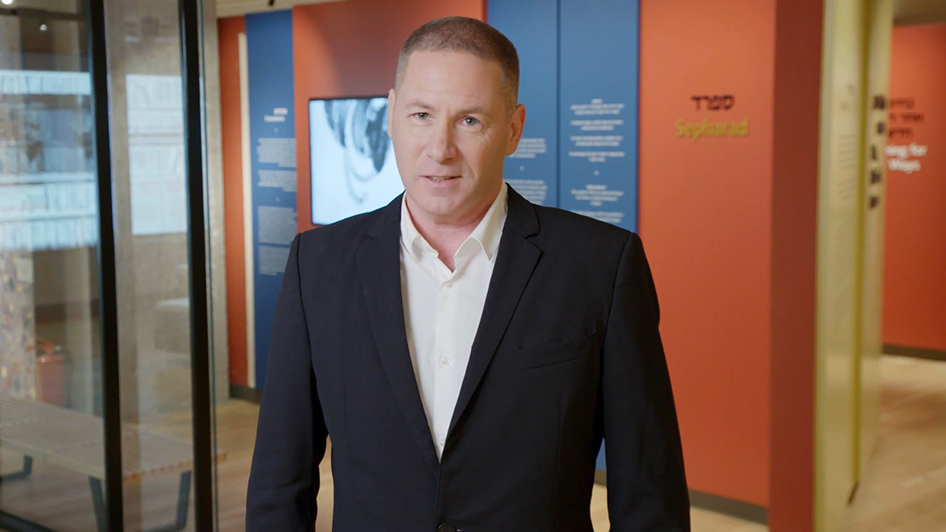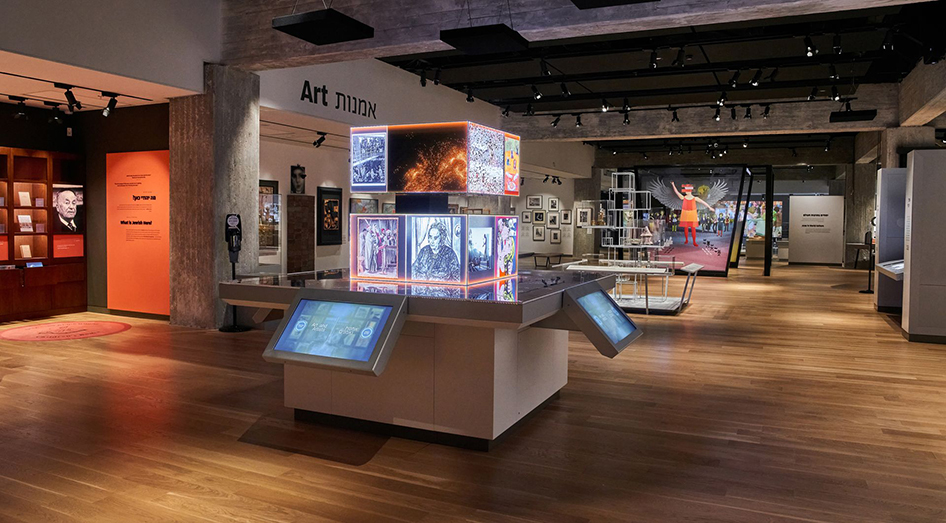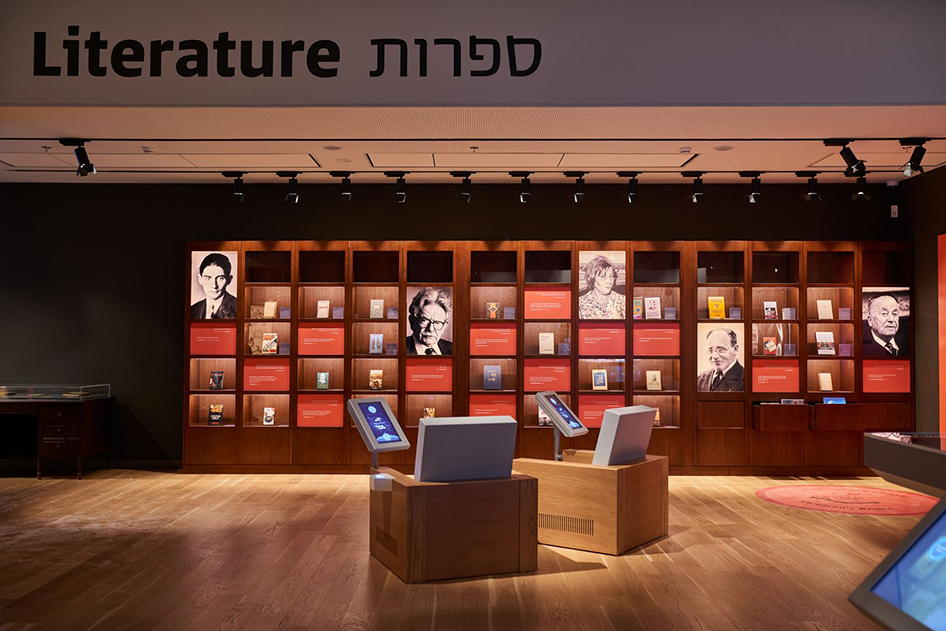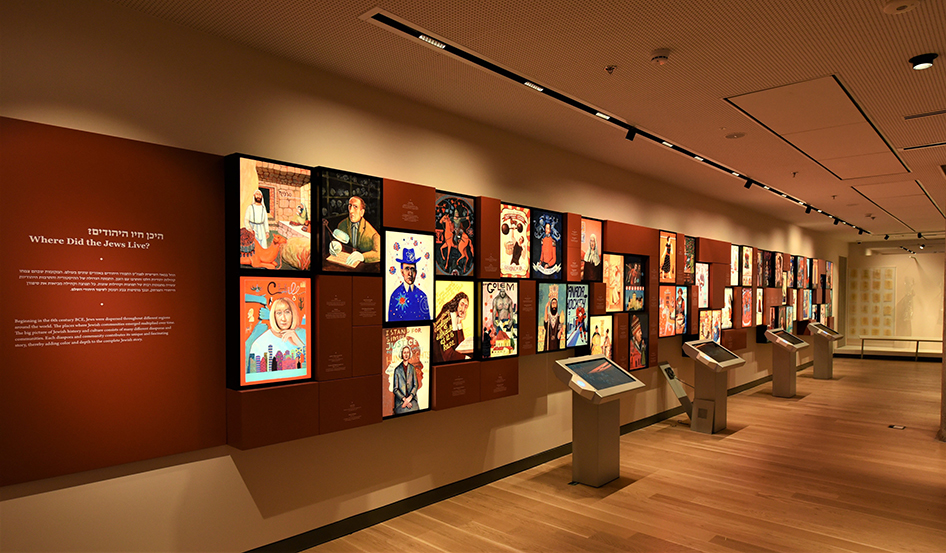DAN
ANU: We are all part of the story.

The world’s largest Jewish museum – ANU – Museum of the Jewish People – opened its doors just a couple of months ago in March 2021 after ten years of intensive planning and renovation. We spoke to Dan Tadmor, ANU – Museum of the Jewish People’s CEO to get an inside peek at the tremendous transformation that has occurred within this newly expanded and reimagined space.
Tell us a little bit about yourself and how you came to assume this role at the museum.
I joined the museum eight and a half years ago, at the end of 2012. I came from the private sector where I was a CEO of a television company that produces channels for satellite and cable. Before that, for almost 20 years, I worked for Yediot Ahronot, Israel’s largest publisher, where I was CEO of the magazine division. I have been working in content my whole life. Running a museum is just another form of content. Now my content world is Jewish identity, which is a subject that has always been close to my heart.
ANU – Museum of the Jewish People was originally called the Diaspora Museum/Beit Hatfutsot. Why did the museum change its name to ANU: Museum of the Jewish People?
With the launch of the new museum a few months ago, we decided to change the full name to ANU- Museum of the Jewish People. ANU in Hebrew means “we/us” and is intended to counter the belief that there is a line dividing different types of Jews, Israeli Jews from Diaspora Jews. That way of thinking was a remnant of the classic Zionist view that was prevalent in the 1950s, 1960s, and early 1970s that there was a fundamental gap between Jews inside Israel and Jews outside of Israel which could only be bridged once Jews all gathered in Israel.
Decades have passed, and as part of the museum’s renewal, it was decided that there would no longer be a separation between different groups of Jews. Currently less than half of the Jews in the world reside in Israel. That means that over 50% of Jews live outside of Israel. The name ANU expresses the idea that even though we are physically dispersed all over the world, we are not defined by our locale. WE are all part of the same story.
On your About page, you write that the “Museum of the Jewish People is more than a museum.” In what way is that true?
We have four main areas of activity, one of which is a museum. We have permanent, changing, and traveling exhibitions. Our second area of activity is education. We are a place of education both for groups and individuals who visit the museum but we also administer educational programs throughout the Jewish world. Wherever Jewish identity is taught, you will find educational programs and digital initiatives that are developed in Tel Aviv but taught throughout the Jewish world. Our third focus is that we are home to extensive databases. We have been cultivating five types of databases for decades: genealogy, family names, communities, photographs, and music. These databases have been around for years, but in the past three years, they have been expanded, digitized, and are accessible online. In the past, you would have had to physically come to the museum and a docent would show you around the databases. Not so anymore. You can access the database from your home – anytime, any place at no charge. Lastly, we are a place of culture. In regular (non-COVID) times, we have five auditoriums, as well as other spaces that we use, where daily concerts, performances, lectures, documentary screenings, and events are hosted.

Generational Wisdom – Photo: Shahar and Ziv Katz 
Art and Artists Interactive – Photo: Shahar and Ziv Katz
Is the museum family-friendly?
Absolutely. We have a children’s gallery (which is temporarily closed due to COVID) which is 4,000 square feet and is entirely interactive. The space houses an exhibition called Heroes which showcases 150 Jewish men and women who made significant contributions to the Jewish people and humankind. Heroes is perfect for children ages 6-12. In the meantime, the museum has many interactive stations that are suitable for kids. Families consult with us when they enter the museum, and we have a concierge in the lobby during busy times who advises and directs visitors to family-centered areas. We are also developing audio-guided tours for families.
What makes the museum a must-see for visitors?
First of all, we are by far the biggest Jewish museum in the world spanning 72,000 square feet. Beside the physical size of the museum, there are hundreds of Jewish museums all over the world. But they are divided into two main categories: they are either territorial museums that tell the story of a specific community. Or they are Holocaust or tolerance museums.
We are the only museum in the world that tells the story of the Jewish people in its entirety – both in terms of history, geography, and the themes of Jewish identity. It is also important to us in terms of gender, ethnicity, and denomination that everyone is represented and should be able to see themselves in the museum. The museum is also appealing to non-Jews as it tells the unique and ongoing story of the Jewish people which intertwines with the story of humankind.
We have over 50 specially produced films that we created from scratch. We invested approximately $15 million in media. So it is an extremely modern and cutting-edge museum but not at the expense of having original meaningful objects that tell meaningful stories. So all in all, it is an extremely immersive experience.
Even though tourism has yet to resume, we have hosted over 35,000 Israeli visitors in two months. We distribute 400 questionnaires a week and the feedback we are hearing is very positive…97% of visitors would recommend the museum to others. We hear from visitors that this is a moving, immersive, and emotional experience. When you step into the museum, sounds and visual stimulation come out at you. We look forward to hearing feedback from Jews visiting from outside of Israel. The work doesn’t end when you open a museum – it just begins. You have to be attentive to the messages you are getting from your visitors, and help them enjoy the best experience possible. Trained docents and guides are spread out across the floor area as “Ask me” guides. We are also in a convenient location – on the Tel Aviv University campus right off the Ayalon Highway. The amenities are fabulous with a cafeteria and great spaces for convening and options for early open and late closing hours.
What is the most satisfying aspect of your job?
I have always been involved in important and creative work but this position merges the two things I love to do most: management and engaging my intellectual side. I get paid to read. I get paid to know more and delve deeper. This is a side of me that since I left university in the eighties had not been engaged. I get to tackle issues that are intellectually deep. When you are in an eminent Jewish museum, you need to know what you are doing and you need to be well informed.
Please share with us how you envision that the museum can help build bridges between Israel and the Diaspora.
Jews in Israel and around the world know less and less about each other. There is growing ignorance between different groups of Jews all over the world. Israeli Jews don’t know enough about global Jewry. American Jews tend to think about Israeli Jews more than the other way around. One of our missions is to inform different Jews about each other. We want Jews and non-Jews from around the world to visit the museum and learn about Jewish history. We very much believe in dialogue and one of the new spaces in the museum, The Tisch Center for Dialogue, is designed for groups to sit down and talk with each other. Where there is dialogue, there is hope.

Literature – Photo: Shahar and Ziv Katz 
Where Did the Jews Live-Artist Lena Revenko- Photo: Shahar and Ziv Katz
Influential Jewish Icons video




